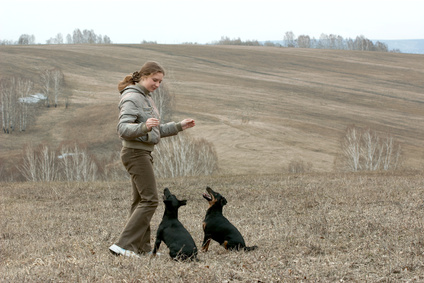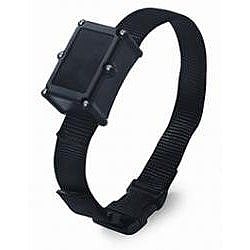
Classes for Training Service Dogs. Service dogs are trained to be of assistance and companionship to people with disabilities. The dog is trained according to the need of the individuals who request service dogs. Those in wheelchairs, the blind and deaf and people with mental disorders are able to acquire a service dog. Some dogs are used as companion and therapy dogs that visit patients who are either at home or in a hospital. A service dog must have a calm temperament. If there is any sign of aggression, the dog is not used. Service dogs provide many services and must be comfortable in different environments.

While the use of assistance animals in the United States began after World War I, the seeing eye dog training program was founded in 1929. The choice for seeing eye dogs included German shepherds, Labradors and Golden retrievers. There was some difficulty in the acceptance of seeing eye dogs, but by the 1970s the popularity gave way to other service dogs. Service dogs can come from animal shelters, adoption agencies, breeders or a person's own home. There are no specific breeds sought to become service dogs. The law does not require that a service dog receive certification to be considered a service dog. No business can demand proof of service status of a dog nor are businesses allowed to quarantine a service animal.

The training of a service dog takes at least two to three years, as they spend many hours learning how to eventually perform with a disabled or impaired person. Anyone living with a mobile or mental impairment can request a service dog. Service dogs are trained to assist people with many types of disabilities and impairments. The titles service dogs hold include migraine and seizure alert dogs, cardio/pulmonary/vascular dogs, mobility dogs, Alzheimer's dogs, autism dogs, hearing dogs, psychiatric dogs, post-traumatic stress dogs and seeing eye dogs. Mobility dogs may pull wheelchairs, open doors, retrieve objects when dropped and flip on the light switch. Each type of service dog is trained specifically for the task required to assist his partner.
All dogs begin in foster care receiving the first stages of obedience training. Puppies are placed in foster care for 15 to 24 months after weaning. During this time, puppies receive house training and basic obedience training. The puppy attends training classes where he will learn the basic commands–sit, down, off, leave, and to focus on the trainer. Classes are generally an hour, scheduled on a weekly basis and range from eight to 12 weeks. The service dog must respond to all commands the first time, remain calm and polite in public and demonstrate a calm temperament with other dogs and children.
Service dogs receive approximately another 120 hours of training before receiving certification. The basic obedience training is reinforced. Additional training involves conditioning to wheelchairs, walkers, canes and other situations, according to the type of service for which the dog is training. Psychiatric service dogs will begin training to recognize signals that lead to distress, learn to offer different comfort behaviors such as cuddling, licking tears, initiating play, reminding the person to take medication and other types of skill sets to assist the person according to the mental disorder. Service dogs who will assist someone in a wheelchair will learn to pull the chair, retrieve dropped items, assist the person should he fall or tip the chair over, and keep the person company, while possibly blocking others from approaching.
This stage of training for service dogs includes working with the assigned person. This stage of the training may take up to another year, with a trainer guiding the person on the dog's commands for basic obedience and the specialized training. The dog and new owner work with the trainer during the next three to six months to ensure a match with which both are comfortable. The new owner will have ongoing support from the service dog organization.
 How to find the Best Electronic Dog Training Collar
How to find the Best Electronic Dog Training C
How to find the Best Electronic Dog Training Collar
How to find the Best Electronic Dog Training C
 Scent Training Dogs
Scent Training Dogs
Scent Training Dog
Scent Training Dogs
Scent Training Dogs
Scent Training Dog
 How to Potty Train Using A Dog Training Bell
How to Potty Train Using A Dog Training Bell
How to Potty Train Using A Dog Training Bell
How to Potty Train Using A Dog Training Bell
 Labrador Puppy Training
Labrador Puppy Training
Labrador Puppy
Labrador Puppy Training
Labrador Puppy Training
Labrador Puppy
 What Training Methods Work Best on Dogs?
What Training Methods Work Best on Dogs?
What Training Methods Work Best on Dogs?
What Training Methods Work Best on Dogs?
Copyright © 2005-2016 Pet Information All Rights Reserved
Contact us: www162date@outlook.com